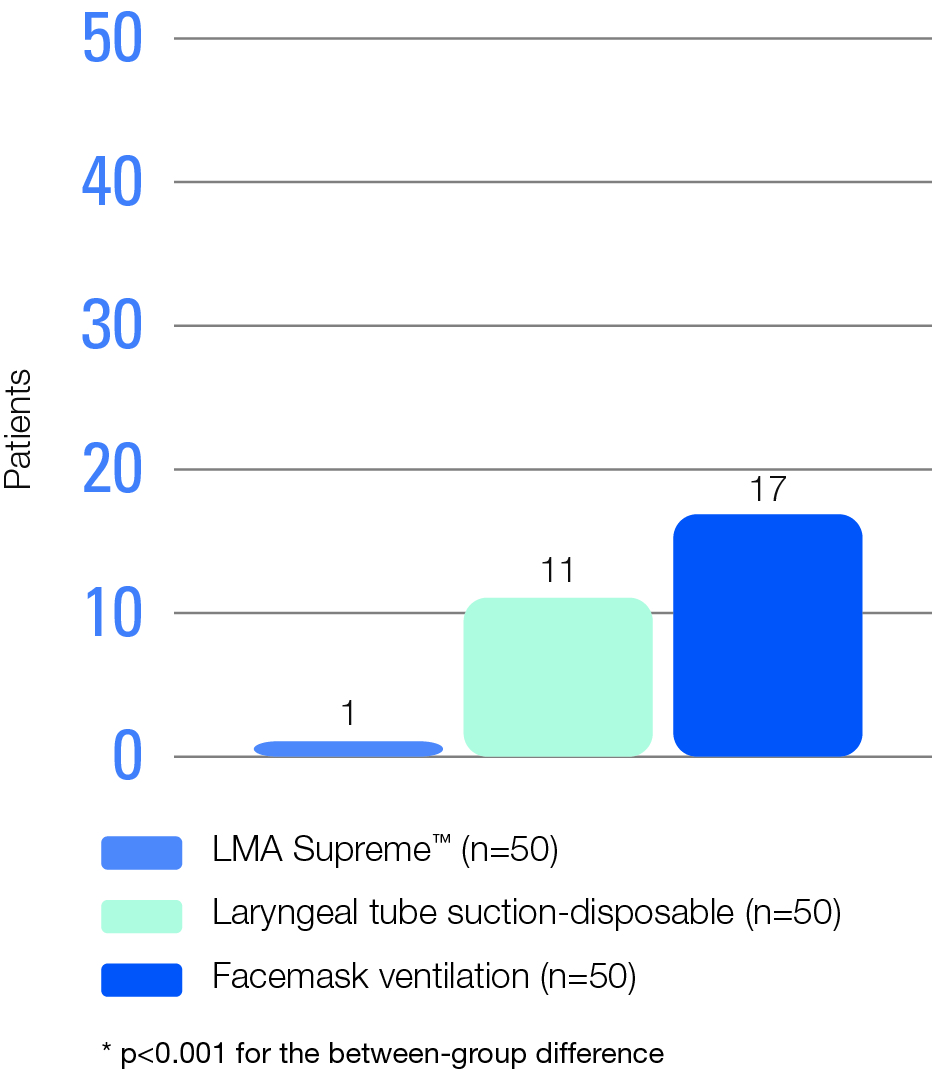Basic life support trained nurses ventilate more efficiently with laryngeal mask supreme than with facemask or laryngeal tube suction-disposable – A prospective, randomized clinical trial
Authors
Gruber E. et al.
Publication
Resuscitation 2014; 85 (4): 499–502.
Summary
- A study to compare aspects of airway management and ventilation with the LMA Supreme™, the laryngeal tube suction-disposable and facemask ventilation when placed by nurses who had received only minimal training in their use
- After minimal training, nurses with basic life support skills were able to use the LMA Supreme™ more effectively to ventilate patients than either the laryngeal tube suction-disposable or facemask ventilation
Objectives:
- To compare aspects of airway management and ventilation with the LMA Supreme™, the laryngeal tube suctiondisposable and facemask ventilation when placed by nurses who had received only minimal training in their use
Method:
- This was a prospective study conducted in American Society of Anesthesiologists class 1-2 patients undergoing elective surgery
- Patients were randomised to receive the LMA Supreme™, the laryngeal tube suction-disposable or facemask ventilation for airway management
- Twenty nurses who had undergone basic life support training but who had no clinical experience of airway management were selected to place the devices
- Placement of the devices was done in the operating theatre under the supervision of anaesthesiologists
- The devices were placed within three months of the nurses undergoing a 1-hour practical training session on their use
- Nurses were allowed a maximum of two 90-second attempts to manage the airway and to ventilate the patient
- Outcomes of interest were
- Time to effective ventilation
- Tidal volume
- Peak airway pressure
- Leak pressure
Results:
- Male and female patients were randomised to receive airway management with the LMA Supreme™ (n=50), the laryngeal tube suction-disposable (n=50) or facemask ventilation (n=50)
- The demographic and baseline characteristics (including haemodynamic and pulmonary parameters) of patients in the three treatment groups were similar
- The mean age and body mass index of patients was 47.7-49.4 years and 23.7-24.6 kg/m2, respectively
- Successful airway management was more often achieved in patients who had the LMA Supreme™ inserted (Figure 1)
Figure 1. Rate of ventilation failure* with the LMA Supreme™, laryngeal tube suction-disposable and facemask ventilation when placed by nurses with minimal training in their use
- Aspects of ventilation with the three devices are shown in Table 1
Table 1. Aspects of ventilation with the LMA Supreme™, laryngeal tube suction-disposable and facemask ventilation when placed by nurses with minimal training in their use†
† Data (shown only for those patients in whom ventilation was successful) are presented as mean ± standard deviation
‡ Time from first contact with the device to correct airway management and obvious chest expansion during manual ventilation
* p<0.001 for the between-group difference; ** p<0.05 vs. laryngeal tube suction-disposable
- Rates of stomach insufflation were comparable in the three treatment groups
- Blood stains were less often observed on the LMA Supreme™ than on the laryngeal tube suction-disposable (21% vs. 49%; p<0.05)
Conclusions:
- After minimal training, nurses with basic life support skills were able to use the LMA Supreme™ with a high rate of success in a non-emergency situation
- Nurses were able to use the LMA Supreme™ more effectively to ventilate patients than either the laryngeal tube suctiondisposable or facemask ventilation

